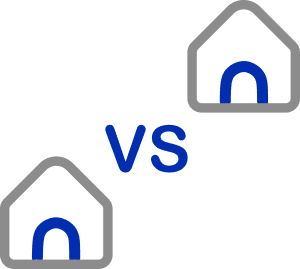Listed property schemes
These are also called ‘property trusts’ or ‘real estate investment trusts’ (REITs). Property schemes listed on a public market, such as the Australian Securities Exchange (ASX), are:
- Easier to value, as you can see what each unit is worth at any point in time
- Easier to sell if you no longer want the investment
- Subject to market listing rules

Unlisted property schemes
An unlisted property scheme does not list on a public market. This means:
- You can’t easily see whether the value of your investment is going up or down
- It’s not subject to ongoing supervision by a market supervisor, such as the ASX
- It can be difficult to get out of if you want to withdraw your money early
- If you can withdraw your money, it may be subject to strict conditions and fees










